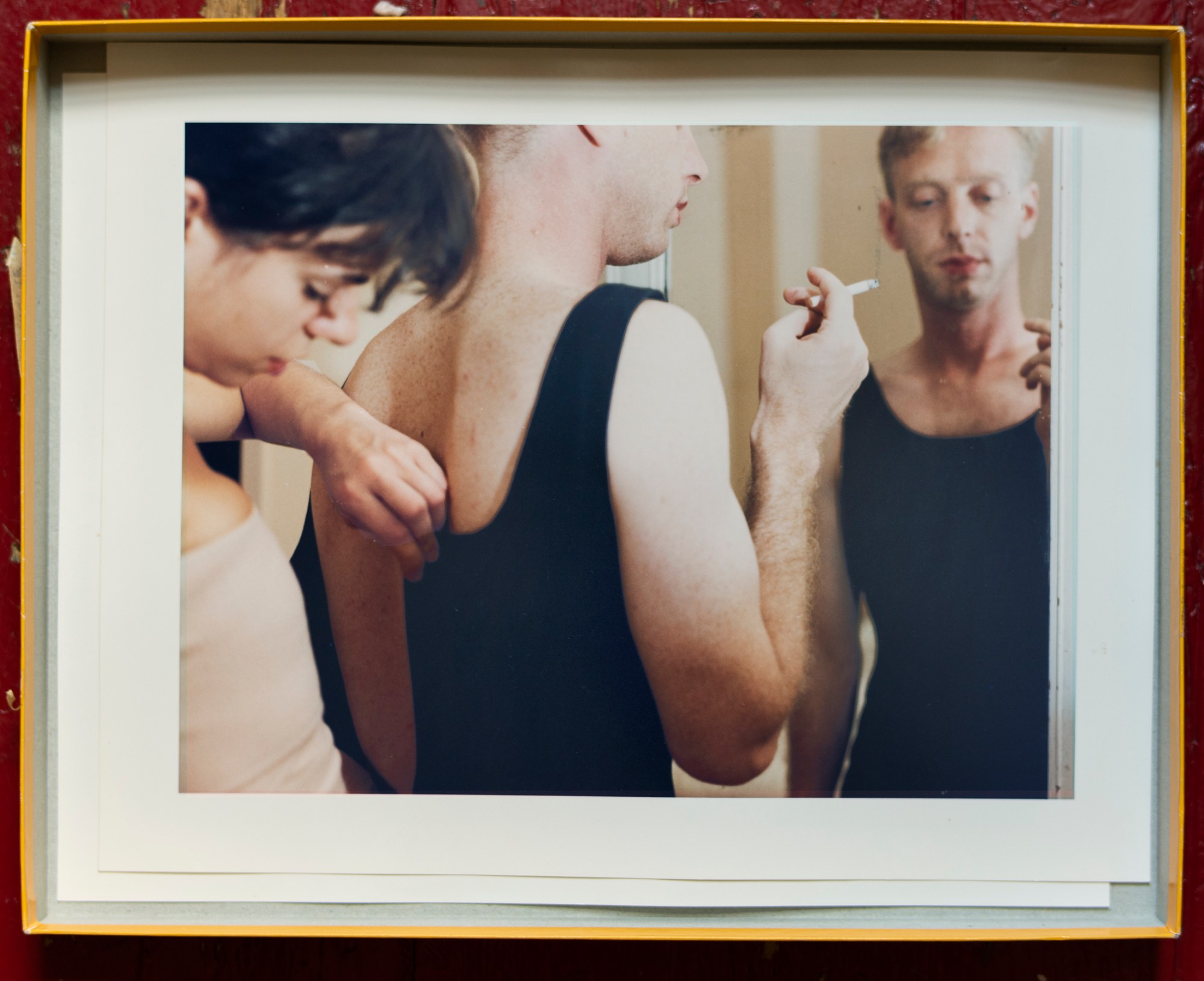“Maybe it’s enough to say this is all unpublished work, never exhibited, made while I was a student,” Justine Kurland says of the following images. “And before I knew how to drive.” Taken between 1991 and 1996, during her studies at New York’s School of Visual Arts, and her first year at Yale, these photographs precede Justine’s most celebrated series; one for which she travelled extensively — hence the driving license’s significance — to capture an alternate, utopian America.
Girl Pictures (1997-2002) — in which young women confidently occupy the forests, open highways and roadsides of America that seem to belong, by default, to men — recently became a book, inviting fresh appreciation for the relevance of its themes 20 years after being made. The images published in this article, much like those in Girl Pictures, and ones that can be found in the public collections of the Whitney Museum of American Art, Guggenheim Museum, and International Center of Photography, New York, revel in “the double-edged nature of the American dream”, an intoxicating mix of freedom and darkness. Here, Justine talks us through a few of the pictures.
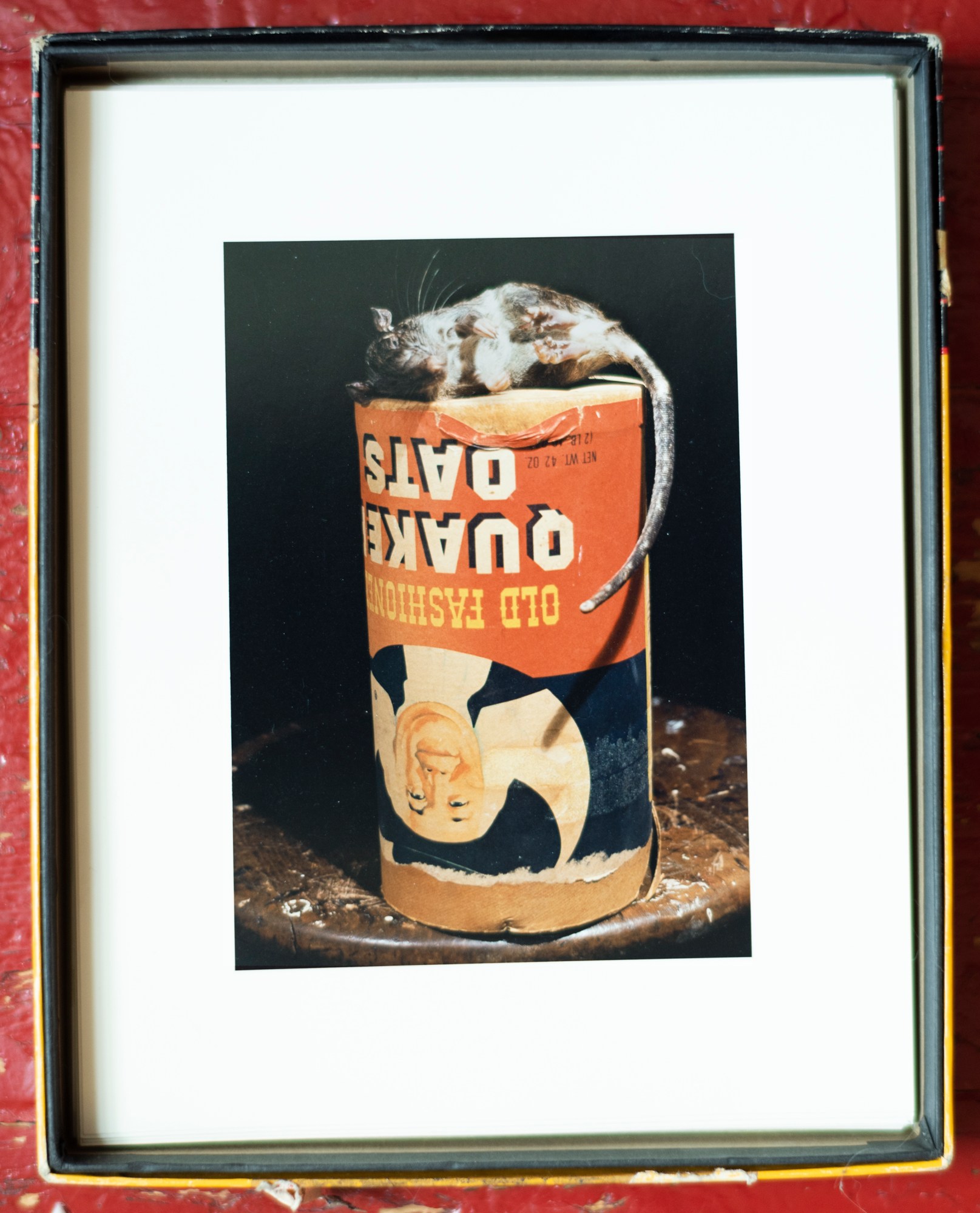
1991
His whole adult life, my father painted still lifes, vegetables and game. Early on, I tried to be like him. I found this dead rat on the street and brought it home to photograph. But there’s also a story from my mother’s side about my great-grandmother. She named her house the Mouse House because of some chocolate pudding she left to cool in the basement. When she got to the bottom of the bowl, she discovered a dead mouse.

1992
I made a vanitas with my friend Lizbi. She gazes at herself in the mirror while skeletons of primate ancestors look back from a museum diorama. They are bonded together through performance and display — two different exposures on the same sheet of photographic paper. A teacher –or maybe another student — told me that the problem with diptychs is that you are left with two dips. I wasn’t sure what that meant, exactly, but I knew it was bad. I had to learn to love singularity.
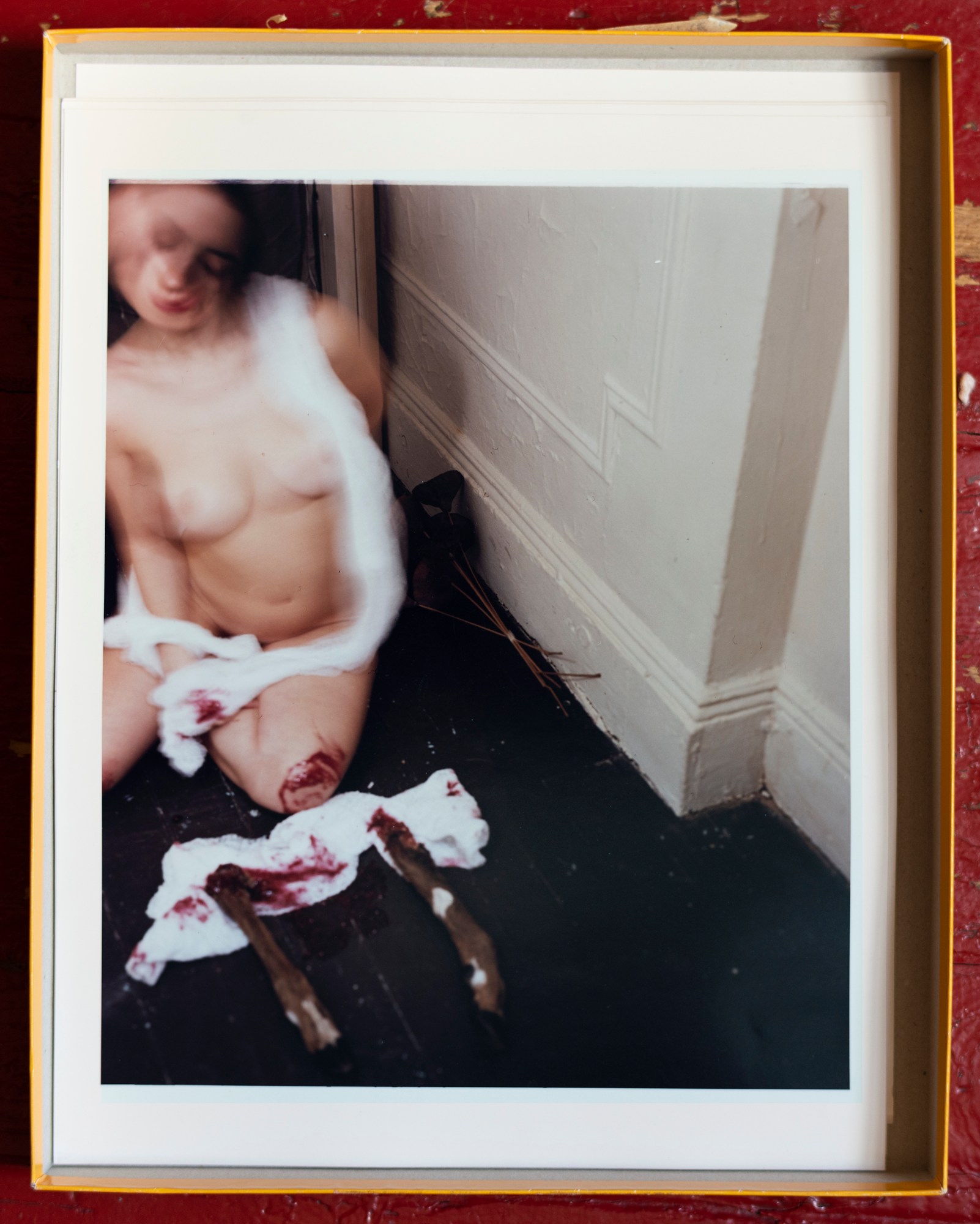
1993
Here, Lizbi transforms into a deer. I wanted it to appear as though she had severed her limbs, a gruesome little mermaid. Her gossamer wrap is a gauze bandage and I used raspberry jam for blood. My father might have given me the hooves (he was a hunter, but mostly of ducks).

1994
I took these frames while waiting to get an abortion. I remember being more nervous about photographing than having the procedure, as though I was stealing something from the doctors by recording my own body. I wish the pictures were better. The only photographs I know of abortions are by Abigail Heyman — in her 1974 book, Growing Up Female — and my student Cheryl Mukherji.
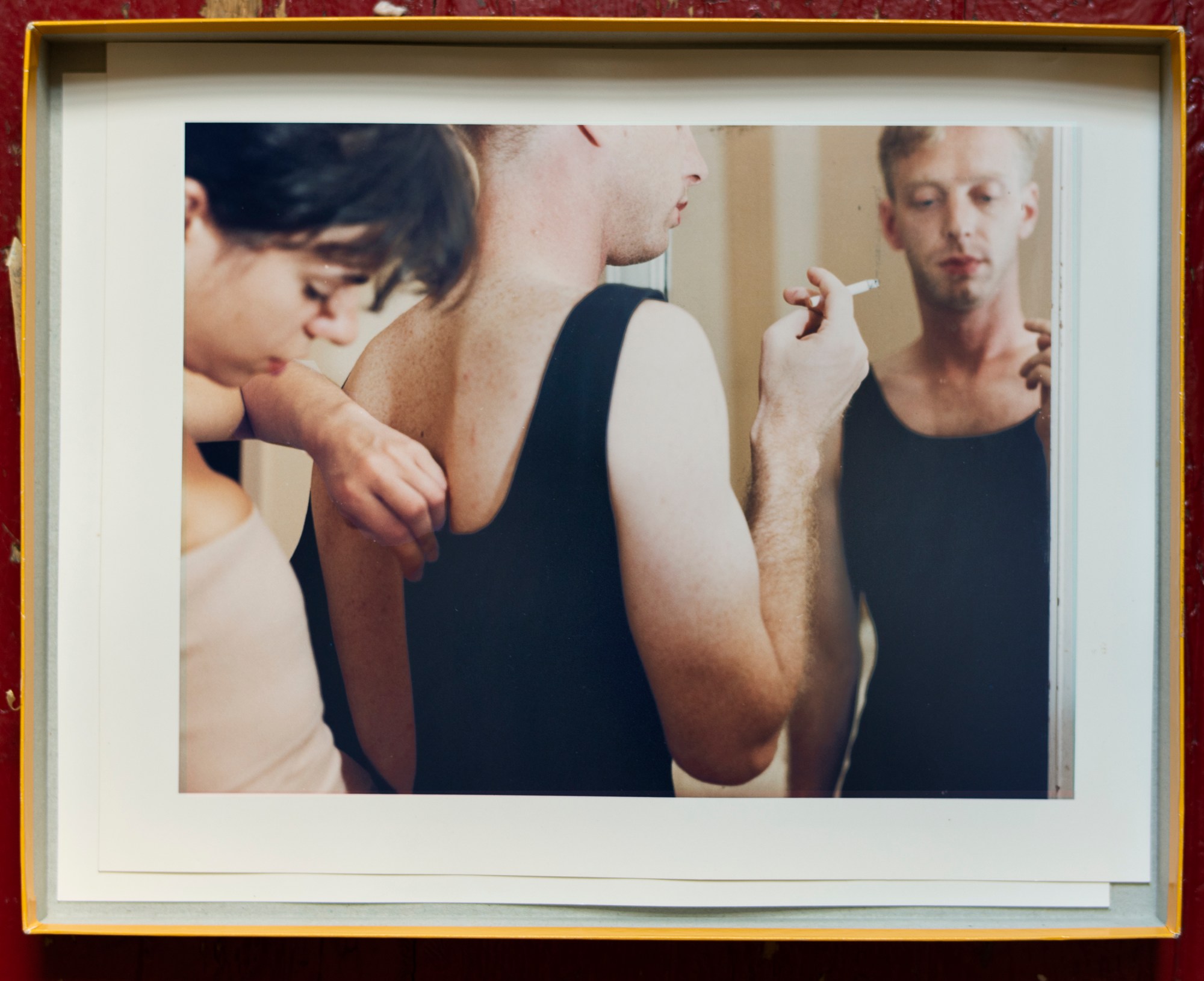
1995
I used an ACE bandage to bind my chest and photographed myself dressing my boyfriend in drag. Photography allowed us to play make believe, reversing gender and queering our straight relationship. The truth is, I loved to see Jim in a dress.
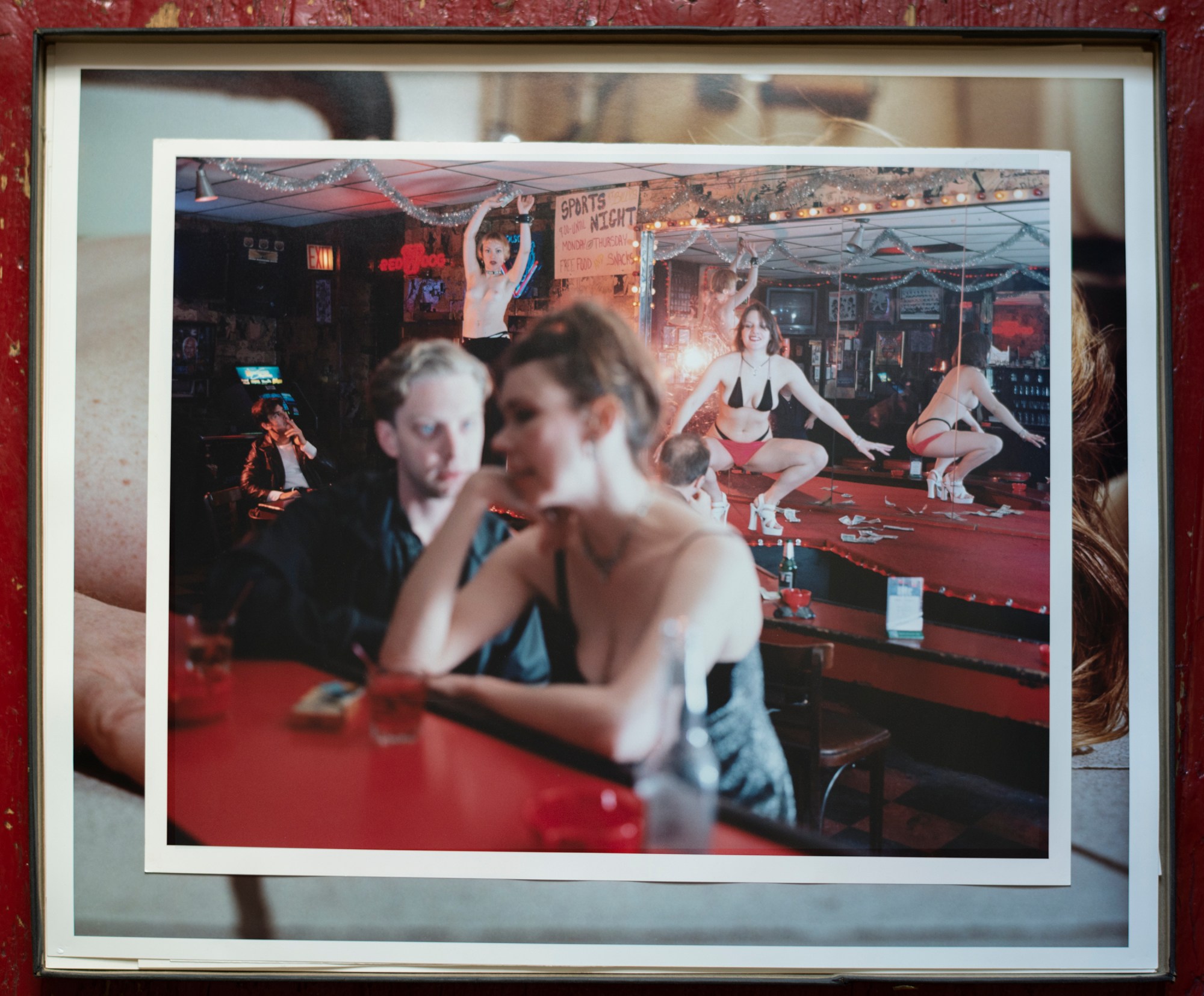
1996
In my first year at Yale I made a series of staged narrative photographs: film stills enacting scenes with female serial killers. Because I worked day shifts as a bartender at Billy’s Topless, John, the day manager, let me shoot on location, and the dancers let me photograph them on stage (the other characters are friends helping me out).

1996
In the late eighties and early nineties we were all reading Dashiell Hammett, Jim Thompson, and Charles Bukowski. Peter was my boyfriend in high school, many years older than me (as in, statutory rape). I moved in with him after graduating because he was the epitome of hard-boiled and I had nowhere else to go. We weren’t really friends afterward, so it was nice of him to agree to be in my photographs.
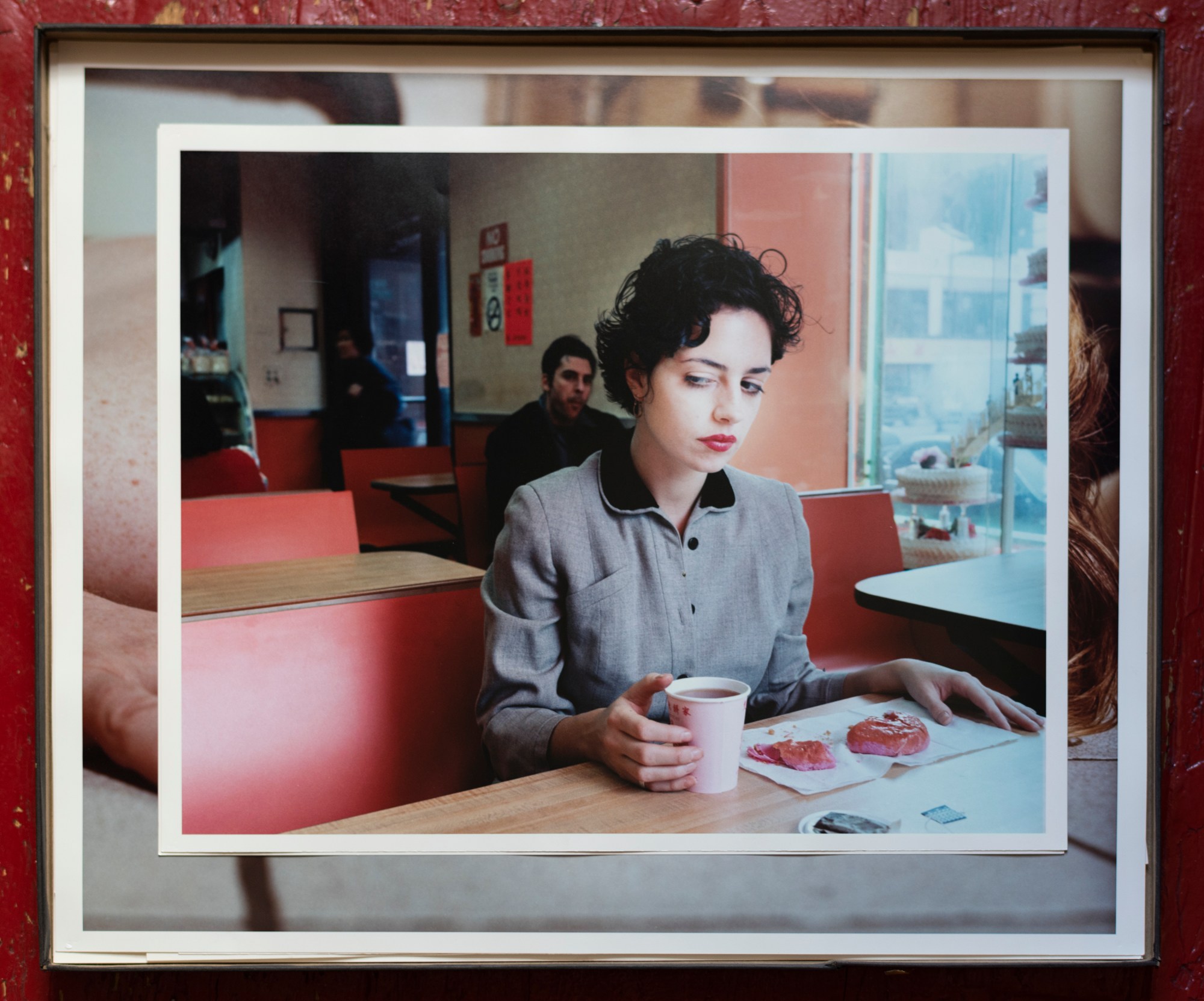
1996
Lizbi sits in De Robertis Pasticceria & Caffe, which closed long ago, yet another casualty of East Village gentrification. I cast her as the quiet but deadly type. The partially visible photograph behind this one shows some of her handiwork: a close-up of a man, dead on the bathroom floor, eyes frozen open in horror — think Psycho shower scene — with white fluid (vanilla yogurt) oozing from his mouth. My older sister, Hannah, played one of the killers, and my cousin Ida played another; I’ve lost most of the prints, but someday I’ll dig up the negatives.
Credits
All images courtesy Justine Kurland
